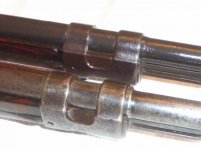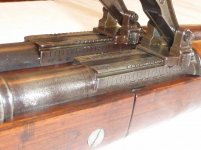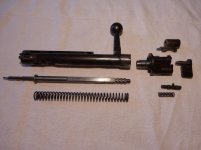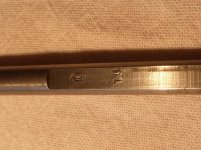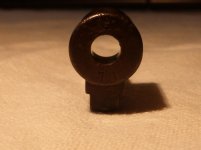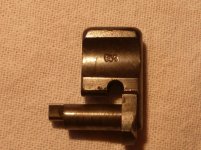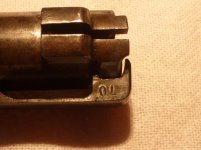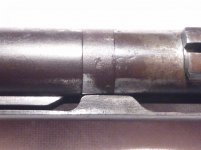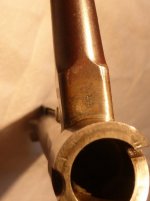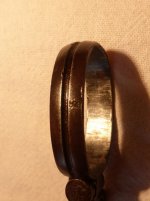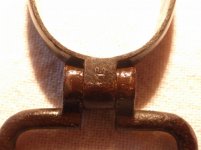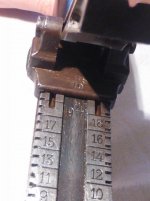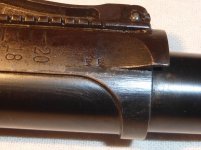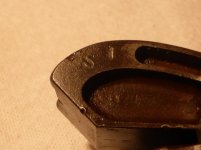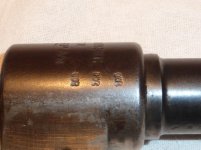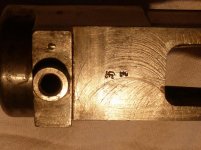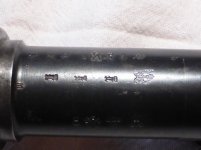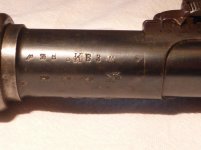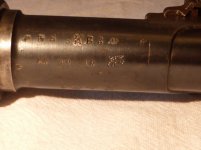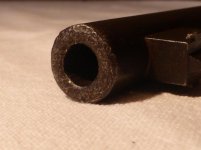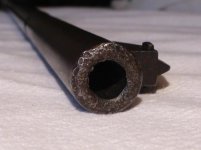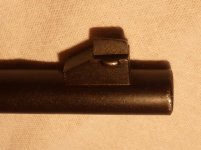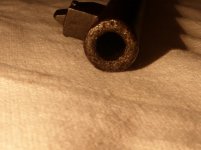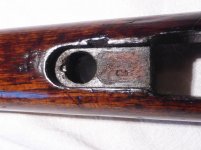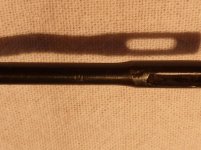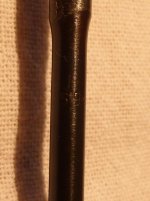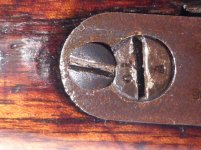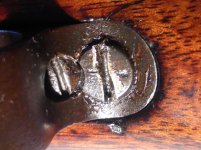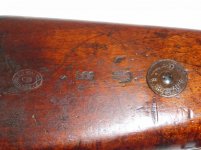UVF Gew.98
Well-known member
This is my 1899 dated Mauser Gew.98.
The rifle retains the majority of its original parts, along with some early features and regimental markings. As far as I can tell the stock, barrel and bolt are the original parts fitted in 1899.
This rifle is also bears the UVF (Ulster Volunteer Force) property mark, and was recently discovered in Northern Ireland where it had been hidden away for probably decades. Upon taking the rifle apart, it was noted that large amounts of grease had been applied internally and externally to the metal (even under butt plate).
The UVF did source many rifles from the German surplus market, which were imported pre WW1 (along with other weapons smuggled in on a very low scale).
It is known that the UVF was armed with some surplus German military rifles, these being I.G. Mod. 71/84's and Model 1888's. This is the first Gew.98 bearing the mark that I have seen, and the only example I can find reference to.
As far as I am aware no Gew.98's were ever surplussed, so how this rifle ended up in their hands is a mystery to me. Many UVF members signed up and fought in WW1, so it might be plausible that this rifle was captured during that period and donated to their cause post war?
Early features:
- Bayonet lug (flat top edge, not scalloped in where the void in the barrel band sits).
- Rear sight base, graduated from 200 meters upwards (for M/88 ammunition).
- Stock only numbered internally.
Modified:
- Rear sight upgraded for use with spitzer ammunition (1905 onwards). Sight base left untouched, but rear sight and slide replaced (both marked 'S', along with the rifles serial number).
- Barrel marked 'S' to show that it received the 1905 upgrade.
- Modern nitro-proof marks applied (2015), markings only visible when rifle is taken apart.
Mis-matched parts:
- Bolt stop/release catch: WW2 K98k part, WaA 280, numbered 15
- Cleaning rod: Early WW2 K98k part, WaA marked, numbered 59 - appears to have been welded together!?
Every other numbered part matches.
The letter 'H' appears on bayonet lug, both barrel bands and trigger group (along with serial number).
The rifle is still in serviceable condition, with a fairly good bore. I will have to scrub it out to say how good (but it has just passed the modern Nitro Proof test).
The stock has an old hairline crack at the wrist, which will be left as it is.
The muzzle/crown is damaged, it appears that someone has been leaning on the rifle muzzle down whilst on guard duty for many hours!


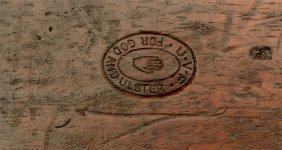
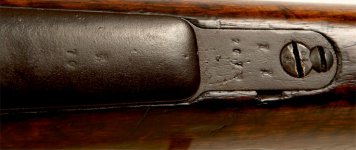


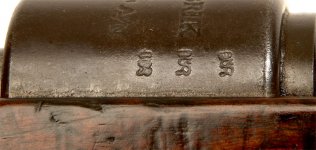

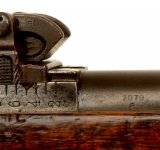
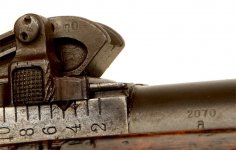

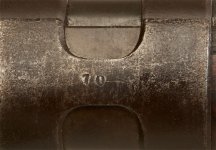
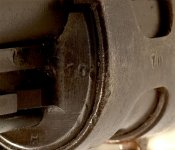

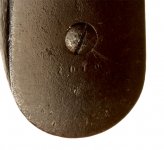
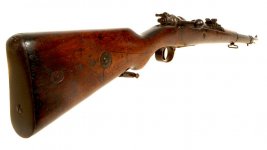

The rifle retains the majority of its original parts, along with some early features and regimental markings. As far as I can tell the stock, barrel and bolt are the original parts fitted in 1899.
This rifle is also bears the UVF (Ulster Volunteer Force) property mark, and was recently discovered in Northern Ireland where it had been hidden away for probably decades. Upon taking the rifle apart, it was noted that large amounts of grease had been applied internally and externally to the metal (even under butt plate).
The UVF did source many rifles from the German surplus market, which were imported pre WW1 (along with other weapons smuggled in on a very low scale).
It is known that the UVF was armed with some surplus German military rifles, these being I.G. Mod. 71/84's and Model 1888's. This is the first Gew.98 bearing the mark that I have seen, and the only example I can find reference to.
As far as I am aware no Gew.98's were ever surplussed, so how this rifle ended up in their hands is a mystery to me. Many UVF members signed up and fought in WW1, so it might be plausible that this rifle was captured during that period and donated to their cause post war?
Early features:
- Bayonet lug (flat top edge, not scalloped in where the void in the barrel band sits).
- Rear sight base, graduated from 200 meters upwards (for M/88 ammunition).
- Stock only numbered internally.
Modified:
- Rear sight upgraded for use with spitzer ammunition (1905 onwards). Sight base left untouched, but rear sight and slide replaced (both marked 'S', along with the rifles serial number).
- Barrel marked 'S' to show that it received the 1905 upgrade.
- Modern nitro-proof marks applied (2015), markings only visible when rifle is taken apart.
Mis-matched parts:
- Bolt stop/release catch: WW2 K98k part, WaA 280, numbered 15
- Cleaning rod: Early WW2 K98k part, WaA marked, numbered 59 - appears to have been welded together!?
Every other numbered part matches.
The letter 'H' appears on bayonet lug, both barrel bands and trigger group (along with serial number).
The rifle is still in serviceable condition, with a fairly good bore. I will have to scrub it out to say how good (but it has just passed the modern Nitro Proof test).
The stock has an old hairline crack at the wrist, which will be left as it is.
The muzzle/crown is damaged, it appears that someone has been leaning on the rifle muzzle down whilst on guard duty for many hours!



















